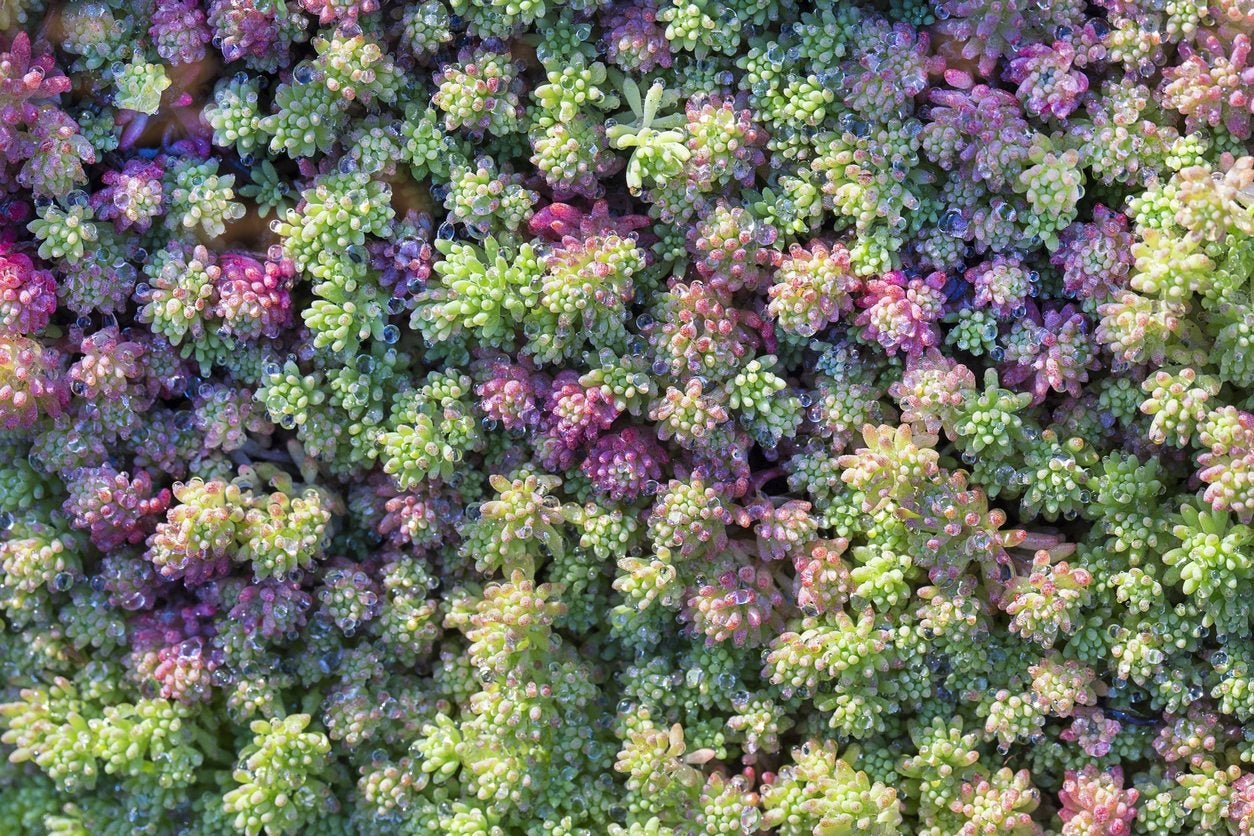Creeping Sedum Info: Learn About Growing Sedum As A Groundcover


If you have a hot, dry, sunny location, groundcover sedum is a perfect match. Using sedum as a groundcover keeps other plant roots cool, conserves moisture, staves off erosion, and establishes very rapidly. Plus, these pleasant little plants offer easy-care appeal and color. If you are a fan of low maintenance plants, continue reading for creeping sedum info.
Creeping Sedum Info
Sedum plants come in many shapes and sizes and are prized for their quick establishment and "set it and forget it" nature. While a little bit of care is required for baby plants, once they have been in site for a couple of months, these charming succulents can mostly be left alone. Rockeries, paths, containers, and hilly areas are perfect sites for growing sedum groundcover, one of the lowest forms of the group. Low growing sedum are also referred to as stonecrop, and for good reason. They can literally burst with life even in the cracks of a stone wall. Groundcover sedum comes in varieties with gently rounded leaves tinged in pink to chubby, spiky, yellow-green foliage. It is these thick leaves that allow sedums to store water and thrive in hot, dry locations. An outstanding surprise and contrast to the interesting leaves are the blooms. Tiny starry flowers in dense, airy clusters come in hues of yellow to pink to rise above the low lying plants, creating drama and a swirl of color.
How to Use Sedum as a Groundcover
The adaptable plants have a wide variety of uses in the landscape. They can be used as trailing plants in containers, tumbling over the edge with unconcerned glee. Sedums fit into tiny spaces around pavers, rocks, and stones, where they don't mind the heat generated by such sun-cooked items. Modern cultivation has seen them part of roof gardens or even vertical constructs. Small quirky displays find them planted on top of birdhouses or even dog shelters. In areas with low foot traffic, they are a great substitute for water needy sod grass and they don't need mowing.
Tips on Growing Sedum Groundcover
Sedum plants tolerate most soil pH but prefer slightly acidic conditions. The biggest requirements are sun and loose, well-draining soil. The soil doesn't need to be particularly fertile; in fact, sedums seem to do best in areas with low nutrient content. If planting a carpet of these succulents, space them as far apart as the suggested final dimensions. Very quickly the plants will fill in for a full effect. Water young plants weekly but mature specimens can do without irrigation in all but the hottest summers. The faded flowers will usually break off once dry, but you can keep things tidy by pulling or cutting them off. Very few plants will accommodate long vacations like sedum and they will keep supplying their unique appeal for years.
Gardening tips, videos, info and more delivered right to your inbox!
Sign up for the Gardening Know How newsletter today and receive a free copy of our e-book "How to Grow Delicious Tomatoes".

Bonnie Grant is a professional landscaper with a Certification in Urban Gardening. She has been gardening and writing for 15 years. A former professional chef, she has a passion for edible landscaping.
-
 Terrifically Tubular Flowers For Hummingbirds: 9 Tube-Flowered Plants To Attract Hummers
Terrifically Tubular Flowers For Hummingbirds: 9 Tube-Flowered Plants To Attract HummersGrowing tubular flowers for hummingbirds helps you create the optimum feeding conditions for your winged friends. Here are nine tubed delights for hummers
By Tonya Barnett
-
 How To Grow Hydroponic Tomatoes For Fresh Indoor Harvests – No Soil Required
How To Grow Hydroponic Tomatoes For Fresh Indoor Harvests – No Soil RequiredLearning how to grow tomatoes in water is easy and allows you to harvest fresh-home-grown produce in every season without any mess.
By Ellen Wells